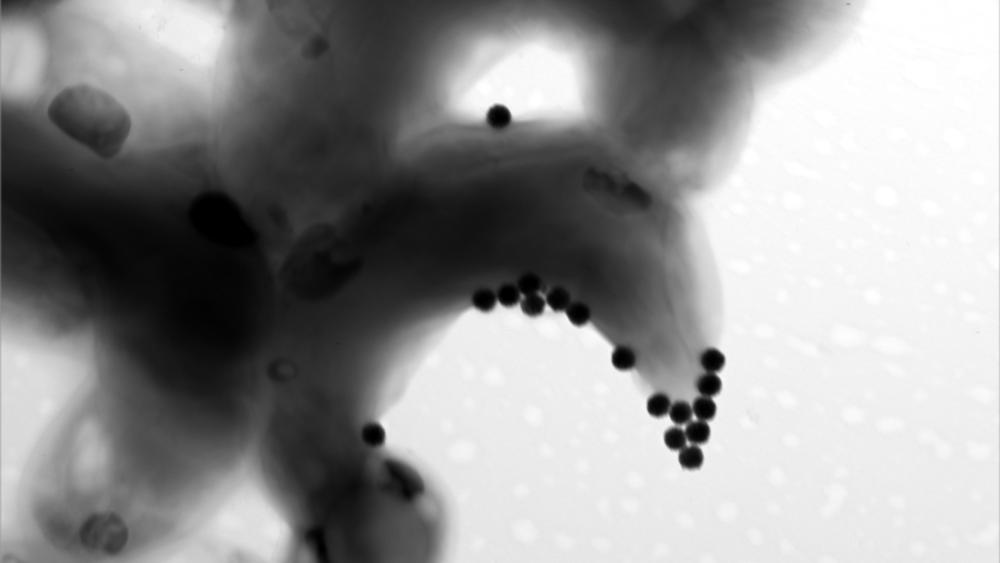
This microscopic picture shows an algae cell that tries to get rid of nanoplastics, but it cannot because they are sticky. | Photo: Fazel A. Monikh
Ecotoxicity studies are usually conducted according to established protocols using exposure tests, in which organisms are exposed to different substances under conditions that mimick those in the environment as realistically as possible.
Shortcomings of previous assessment methods
Previous ecotoxicity studies of micro- and nanoplastics have used commercially available spherical particles as models for MNPs, but in nature plastic particles occur in variable shapes, sizes and chemical compositions. "Each of these properties can influence their dynamic behaviour and toxicology and should be taken into account when conducting ecotoxicological experiments to assess their risk," said Fazel A. Monikh, lead author of the study and currently a scientist at IGB in Neuglobsow.
Moreover, protocols developed for chemicals that dissolve or form stable dispersions are currently used for assessing the ecotoxicity of MNPs. Plastic particles, however, do not dissolve and also show a dynamic behaviour in the liquid in which they float.
Research protocol considers the specific properties of MNPs
In the journal Nature Protocols, the researchers describe exposure protocols for soil and aquatic ecosystems that consider the particle-specific properties of MNPs and their dynamic behaviour in exposure systems. They also present a method for artificially generating more standardized micro- and nanoparticles for experiments. The protocol has been developed for toxicity testing of MNPs under controlled conditions (i.e. in the lab or in meso- or macrocosms) and is not suitable for monitoring under field conditions.
"The new protocol is an important basis for researchers in ecotoxicology to understand the dose-response relationships after exposure of organisms to MNPs; but also for industry to develop safer plastics and to perform toxicity tests on plastics and to meet regulatory requirements," said Fazel A. Monikh when listing numerous intended applications.
Smaller is not necessarily less toxic
The protocols also consider the differences between micro- and nanoplastics. Nanoplastics are similar in size and shape to large proteins. They therefore behave differently from their microplastic counterparts and may be able to penetrate cells. In addition, a greater proportion of the molecules in nanoplastics are attached to the surface of particles, which can increase interactions with cellular components. "It thus is important to consider the differences between microplastics and nanoplastics when conducting toxicity tests with these particles," said Hans Peter Grossart, IGB researcher and co-author of the study.







